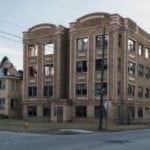 Humans
Humans  Humans
Humans  Animals
Animals 10 Animals That Humiliated and Harmed Historical Leaders
 History
History 10 Most Influential Protests in Modern History
 Creepy
Creepy 10 More Representations of Death from Myth, Legend, and Folktale
 Technology
Technology 10 Scientific Breakthroughs of 2025 That’ll Change Everything
 Our World
Our World 10 Ways Icelandic Culture Makes Other Countries Look Boring
 Misconceptions
Misconceptions 10 Common Misconceptions About the Victorian Era
 Mysteries
Mysteries 10 Strange Unexplained Mysteries of 2025
 Miscellaneous
Miscellaneous 10 of History’s Most Bell-Ringing Finishing Moves
 History
History 10 Great Escapes That Ended Right Back in Captivity
 Humans
Humans 10 Everyday Human Behaviors That Are Actually Survival Instincts
 Animals
Animals 10 Animals That Humiliated and Harmed Historical Leaders
 History
History 10 Most Influential Protests in Modern History
Who's Behind Listverse?

Jamie Frater
Head Editor
Jamie founded Listverse due to an insatiable desire to share fascinating, obscure, and bizarre facts. He has been a guest speaker on numerous national radio and television stations and is a five time published author.
More About Us Creepy
Creepy 10 More Representations of Death from Myth, Legend, and Folktale
 Technology
Technology 10 Scientific Breakthroughs of 2025 That’ll Change Everything
 Our World
Our World 10 Ways Icelandic Culture Makes Other Countries Look Boring
 Misconceptions
Misconceptions 10 Common Misconceptions About the Victorian Era
 Mysteries
Mysteries 10 Strange Unexplained Mysteries of 2025
 Miscellaneous
Miscellaneous 10 of History’s Most Bell-Ringing Finishing Moves
 History
History 10 Great Escapes That Ended Right Back in Captivity
10 Failed Attempts To Create Utopian Cities
Humans have long dreamed of creating the perfect society. To people disappointed with the system they live in, the route to such a utopia always seems obvious: “Let’s just do X, then Y will happen, and everyone will be happy!”
Of course, life isn’t so simple. Whether they’re built on a noble dream, a grand vision, or pure craziness, utopias have a way off going off the rails. The cities below might not all have turned into utter disasters, but they all failed at their self-stated goals spectacularly.
10China’s Deserted Desert Oasis

Dubai is an incredible city. Not so long ago, it was just an arid patch of desert, inhabited by only a few traders. Now it’s gigantic, and plenty in it is equally huge and equally crazy. Its success has inspired plenty of other countries to try to emulate it. Few have failed so spectacularly as China.
In the early 2000s, the Chinese state decided to bring Dubai’s glitz and glamor to inner Mongolia. In a bare patch of the Gobi Desert, they would build a cultural, economic, and political powerhouse. It would feature grand buildings from renowned architects. There would be world-class libraries, stadiums, museums. The name of this city was Ordos, and it would become a magnificent failure.
The trouble was, building a brand new Dubai from scratch in the middle of a desert is expensive. So to offset the billions of dollars they spent, the state ratcheted up the prices of houses in Ordos. They ratcheted them up so high, only Shanghai was more expensive to move to. Ordinary Chinese people took one look at the empty city they could spend their life’s earnings moving to and decided, “Nah.”
Ordos stayed completely empty for nearly a decade. Even today, it’s only sparsely inhabited, less a new Dubai and more a permanent construction site.
9Russia’s Deadly Workers’ ‘Paradise’

Alongside being a murderer, Stalin was a man with vision. One of those visions was to take the communist state he’d inherited off Lenin and turn it into an industrial powerhouse. That meant creating new industrial centers from scratch in less than five years. One such center was Magnitogorsk.
The world’s first completely planned city, Magnitogorsk was to be the steel production hub of Stalin’s Russia. But it was also to be a workers’ paradise. Wide avenues would let in endless sunlight. Open spaces would provide communist children places to play. Everyone would live in large community apartment blocks and engage in “socialist competitions” to improve their city. What could possibly go wrong?
The Russian climate. That’s what could go wrong.
When volunteer workers first arrived, there was literally nothing in Magnitogorsk. That meant sleeping in tents, a massive issue when temperatures routinely plunged below –20 Celsius (–4 °F). The first winter, so many people died that carts had to be sent around the camp each morning to collect all the bodies. When summer rolled round, apocalyptic dust storms buried people alive. There was no clean water in the area, no easy access to food, and no hospitals. In less than a year, the death toll was so high that all the volunteer workers fled.
Magnitogorsk was only finished due to Stalin doing what he did best: murdering people. When the volunteers left, tens of thousands of gulag prisoners were sent to take their place. The “workers’ paradise” became a giant slave labor camp.
8St. Louis’s Urban Nightmare

Visitors from Europe are often surprised at how spread out American cities are. Whereas in Italy or France, most regular people live in giant housing blocks, in the US, those same people live in the suburbs. There’s a reason for this, and its name is Pruitt-Igoe.
Designed by Japanese-American architect Minoru Yamasaki in 1949, Pruitt-Igoe was meant to change US housing forever. A vast complex of 17 apartment buildings standing 11 stories high on the edge of St. Louis, it was intended to be a paradise for the country’s newly emerging middle class. So sure of Pruitt-Igoe’s success were officials that they broadcast its opening in 1954 live on TV.
Yet 1954 was also the year that the Supreme Court declared segregation in schools was unconstitutional. Terrified that the segregated Pruitt-Igoe would suddenly become open to black people, the residents immediately fled for the suburbs. With them went all of the project’s resources.
With Pruitt-Igoe largely uninhabited, officials just stopped caring. Heaters, electricity, and plumping all stopped working. At one point, raw sewage was flowing down the hallways. The poor people who’d moved in after the middle class left found themselves abandoned by police. Drug gangs set up shop. It became one of America’s bleakest, most dangerous housing projects.
By 1972, St. Louis wanted nothing more to do with Pruitt-Igoe. The failed utopia was demolished live on TV in an ironic echo of its optimistic opening.
7Washington State’s Accidental Nudist Colony

Home, located in Washington State, was an attempt to build an anarchist utopia. Founded in 1895, it was supposed to be a place where people could flourish, away from the dictates of government. By being able to do anything they wanted, the founders reasoned that residents would break free of society’s shackles and create a heaven on Earth.
On the other hand, they might just use their newfound freedom to get butt naked.
Since it didn’t have any rules, Home naturally attracted all sorts of slightly odd people. One of the groups who flocked there were people who liked to spend all their time completely naked. We don’t just mean in their houses. They walked naked down the streets, went skinny dipping in the lake, and generally lived life with their junk hanging free.
For plenty of Home’s other residents, this was a freedom too far. The town divided into two groups, the “nudes” and the “prudes,” who fought constantly. Eventually, both sides completely fell out, and Home was dissolved only slightly over a decade after its creation.
6Italy’s ‘Renaissance Death Star’
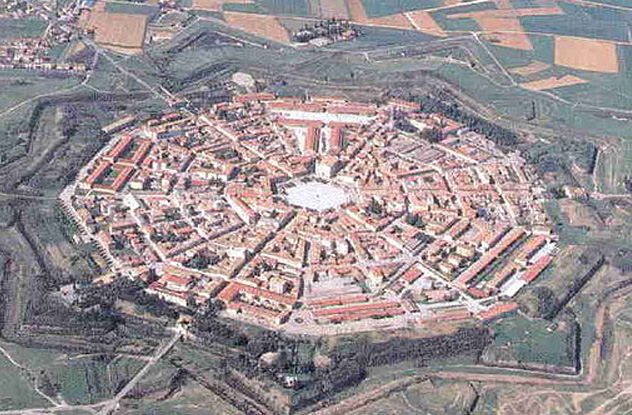
Here’s an odd question for you: If you had the choice, would you live on the Death Star? We’re betting that after an initial pang of excitement, most people would answer “no.” We know this because in the late 16th century, the Venetian Republic asked ordinary Italians exactly that. They built a brand new city that doubled as a superweapon and tried to convince people to live there.
Known as Palmanova, the town was overseen by military architect Giulio Savorgnan. Based on a star, it was meant to be an impregnable utopia for its residents. High walls, a moat, and cutting edge defenses would keep the marauding Ottomans out, while the streets inside would promote communal living and happiness. Everyone would be a winner . . . except for ordinary Italians, who flat-out refused to move there.
The trouble was that Palmanova’s main purpose was to act as a weapon against attacking Ottoman forces. Living there opened you up to all sorts of terrible possibilities, from barbarians raping and pillaging their way through the streets to starvation during a protracted siege. Eventually, the Venetians were forced to pardon criminals and pay them to live in their “Renaissance Death Star.”
In the end, though, things worked out. Sort of. Palmanova is now a popular tourist town, rather than the military superweapon it was designed to be.
5India’s Poverty-Free New Delhi Fantasy
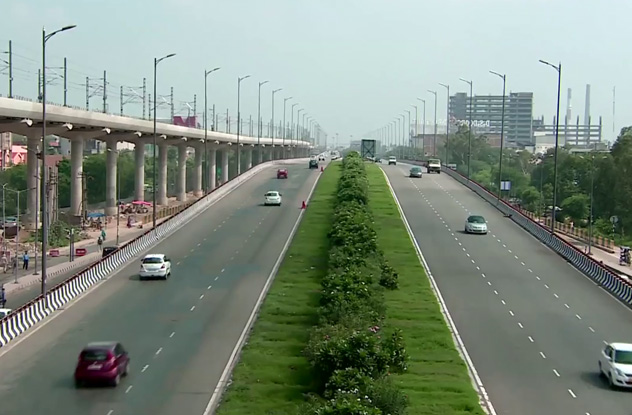
New Delhi in India can be called a lot of things: chaotic, vibrant, bustling, edgy, overwhelming . . . you get the idea. One thing it definitely can’t be called is poverty-free. Of the city’s 18 million residents, half are thought to live in slums or illegal colonies.
Many foreign visitors assume this is just a fact of life in developing India. But New Delhi was meant to be different. On the eve of Indian independence, in 1947, Prime Minister Jawaharlal Nehru declared that New Delhi was going to be a poverty-free modernist utopia, where no one would ever have to live in squalor. That this didn’t happen can be blamed on two things: British colonial rule and Partition.
When India became independent, it was a country that had been bled dry. The British had taken everything they could get their hands on, with the result that most of India started its post-colonial life on the brink of bankruptcy. Delhi was no exception. At its high point, the fund to build a slum-free city totaled only around $1 million in today’s money. Enough to maybe build a house or three but certainly not enough for a city.
The second factor was that New Delhi was already awash with slums. After the horrors of Partition, over half a million fled to the new capital, seeking refuge from the violence. Lacking anywhere to stay or financial support, they simply built their own dwellings. The result was a Delhi ringed with slums, which only got worse as the population increased.
4England’s Infamously Boring Town Of The Future
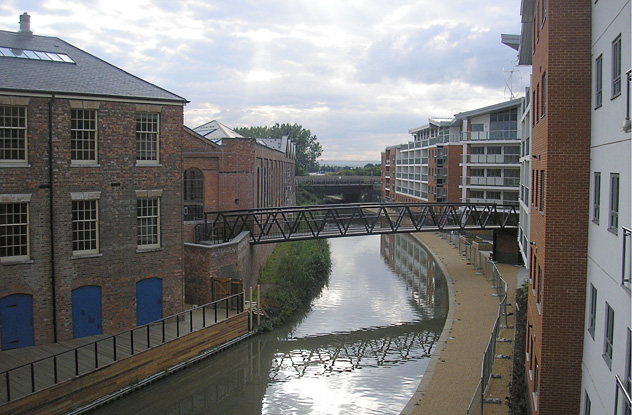
Mention Milton Keynes to most British people, and they’ll snigger in a mildly derisive way. A planned city built in the 1970s, Milton Keynes was meant to symbolize the future of British living. Rather than having a proper town center, it would have an endless grid of suburbs, stretching away as far as the eye could see. Green spaces would be everywhere, and roads would be raised or lowered to let pedestrians walk unimpeded.
It was meant to be a modernist paradise. A place where Brits would move in droves, sparking a craze for other, similar planned towns. At one point, it was even considered a possible candidate for Unesco World Heritage status. There was just one flaw. Milton Keynes was mind-numbingly boring.
The trouble was the lack of a traditional center left Milton Keynes feeling like an endless non-city. Imagine one of those suburbs from Edward Scissorhands stretching out forever and ever with no respite. The city became a byword for boredom and soulless living, to the extent that one of the original planners even wrote a paper titled “What went wrong with Milton Keynes?” Rather than point the way to Britain’s future, this attempt at a suburban utopia ensured no similar towns were ever again attempted in the UK.
3Arizona’s Unfinished Hippie Commune
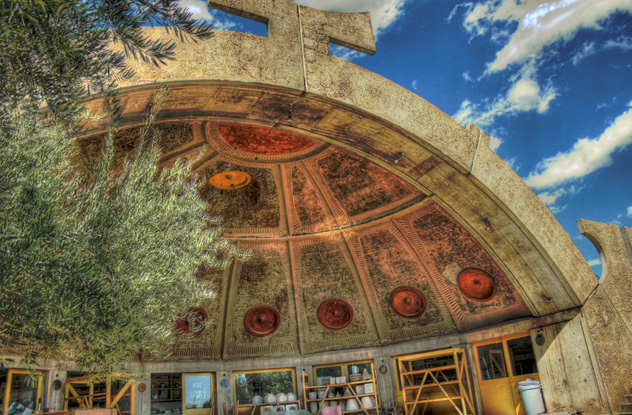
In the early 1970s, Italian architect Paolo Soleri laid out a grand vision for a new type of American city. Sat in the middle of the Arizona desert, Arcosanti would consist of hyper-dense housing units stacked atop one another to resemble an alien termite mound. The people living there would burn no fossil fuels, grow their own food, and be totally self-sufficient. The whole thing would be funded by selling wind chimes. It would be the perfect hippie city.
At the time, the idea of cutting free, exploring alternative living, and turning your back on society was a mainstream desire. Vietnam, the oil crisis, Watergate, and race riots were making Americans yearn for a simpler way of life. So when they got wind of Soleri’s vision, many descended on the desert in droves. It was estimated that Arcosanti would take around five years to build. Fast-forward to 2016, 46 years later, and it is currently 3 percent complete.
The trouble is, funding a new city by selling wind chimes is a moronic idea. But since it was part of Soleri’s grand vision, no one thought to look for different sources of income. Same deal with a plan for using unskilled volunteers instead of professional builders. The result was that Arcosanti never got finished. Although work still continues at the site, let’s just say we’re not holding our breath.
2Skopje’s Double Failed Makeover
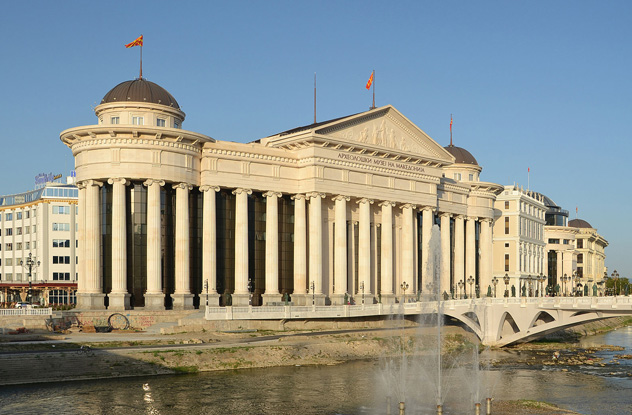
It’s rare that a city gets two shots at transforming itself into a paradise. But Skopje, the capital city of Macedonia, has managed just that. In 1963, an earthquake leveled the city, leaving 100,000 people homeless. The Republic of Yugoslavia (of which Macedonia was then a part) decided no expense would be spared rebuilding the city . . . so long as it emerged to a daring new design. Japanese architect Kenzo Tange received the briefing. He decided to turn Skopje into a concrete wonderland.
The result was a gray, drab, Brutalist city that was paradise for architecture students and hell for everyone else. Rather than becoming a proud emblem of Yugoslavia, Skopje became a kind of regional laughingstock . . . when people bothered to think about it at all. Many of the buildings literally looked like they belonged in a dystopian sci-fi film. By 2010, Macedonians had gotten so fed up with their ugly capital that they decided to sweep it all away. Which brings us to the second attempt at building a utopia.
The Skopje 2014 project saw most of the city center torn down and rebuilt in a neo-classical style, complete with shiny white temples, golden statues and kitschy architecture. Unfortunately, the redevelopment is proving as controversial as the concrete hell it replaced. Rather than a paradise, Skopje residents have called it a “catastrophe,” saying it makes their capital look like a camp, Disneyfied version of an idiot’s idea of ancient Greece.
1Guyana’s Deadly American Dream Town

When the small town first opened in the heart of Guyana’s jungle, people had every reason to believe it would be a success. Founded by a humanitarian famous for fighting to integrate racially divided communities, it would be a rainbow village, a place where Americans of every ethnicity and color could live on an equal footing. It would be organized along principles of equality and brotherly love. It would be known as Jonestown, after its founder, Jim Jones.
What’s truly remarkable about Jonestown is not that it ended in a brutal massacre in which over 900 people died. It’s that it briefly seemed like a viable utopia. For Americans fed up with the racial divisions thrown up in the Civil Rights era and after, it was a way of coming together. Some 68 percent of the original Jonestown members were black—a staggering number in the mid-1970s. Although Jones was clearly a little loopy (and, it later emerged, a drug addict), the idea of a sharing, caring, socialist-style city clearly touched a lot of people. A small number who escaped later said it felt at the start like a place of hope.
You know what happened next. After allegations of child abuse by Jones surfaced, California Congressman Leo Joseph Ryan and several journalists went down to investigate. Jones’s followers murdered them. Immediately afterward, Jones convinced everyone to commit suicide by drinking Kool Aid mixed with cyanide. Prior to 9/11, it was the single largest loss of American life outside a war setting. While most utopias seem doomed to self-destruct, none did so quite as tragically as Jonestown.






